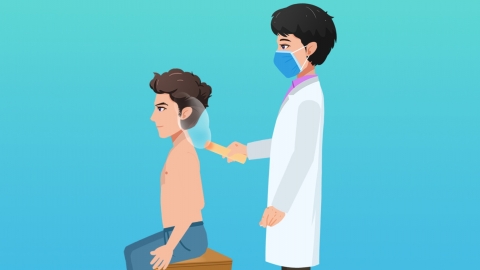What does it mean if there are lumps or granules felt in the shoulder during a massage?
Generally, the presence of granules felt in the shoulder during massage may be caused by muscle nodules, sebaceous cysts, shoulder periarthritis, rotator cuff injury, or cervical spondylosis. If discomfort occurs, timely medical consultation is recommended. Detailed explanations are as follows:

1. Muscle Nodules
Muscle nodules may result from prolonged poor posture, overuse of muscles, or muscle fatigue, leading to tension and contraction of muscle fibers and subsequent formation of small hard knots. These nodules can be easily felt during massage, presenting as granular sensations. Maintaining good sitting and standing posture and avoiding prolonged static postures are recommended.
2. Sebaceous Cysts
Sebaceous cysts are tiny fatty cysts beneath the skin, usually caused by excessive sebum production, inadequate skin cleansing, or fat tissue proliferation after skin injury. During massage, these cysts might be pushed toward the superficial subcutaneous layer and perceived as granules. It is important to maintain skin cleanliness and use mild facial cleansers; excessive squeezing or friction of the skin should be avoided.
3. Shoulder Periarthritis
Shoulder periarthritis may arise from chronic aseptic inflammation of shoulder soft tissues such as muscles, tendons, and bursae. The inflammation leads to adhesion and thickening of shoulder soft tissues, forming nodules or cord-like structures that present as a granular sensation during massage. Accompanying symptoms may include shoulder pain and stiffness. Treatment may include medications such as ibuprofen sustained-release tablets, diclofenac sodium enteric-coated tablets, and amoxicillin capsules, as directed by a physician.
4. Rotator Cuff Injury
Rotator cuff injuries may be caused by shoulder trauma, chronic wear and tear, or degenerative changes leading to tendon damage. Scar tissue or adhesions may form at the injury site, resulting in a granular sensation upon massage. Symptoms often include shoulder and neck pain and weakness. Treatment options may include medications such as Sanqi Shangyao tablets, Yunnan Baiyao capsules, and celecoxib capsules, as advised by a doctor.
5. Cervical Spondylosis
Cervical spondylosis may be caused by degenerative changes in the cervical intervertebral discs or bone spurs leading to structural abnormalities in the cervical spine. Cervical lesions may compress nerve roots or the spinal cord, causing shoulder muscle tension and spasms, forming granular nodules. Additional symptoms may include stiffness, dizziness, and numbness in the hands. Treatment may involve medications such as mecobalamin tablets, etoricoxib tablets, and diazepam tablets, as directed by a physician.
To prevent this symptom, it is recommended to avoid maintaining the same posture for prolonged periods in daily life and to change positions regularly to reduce shoulder strain.







